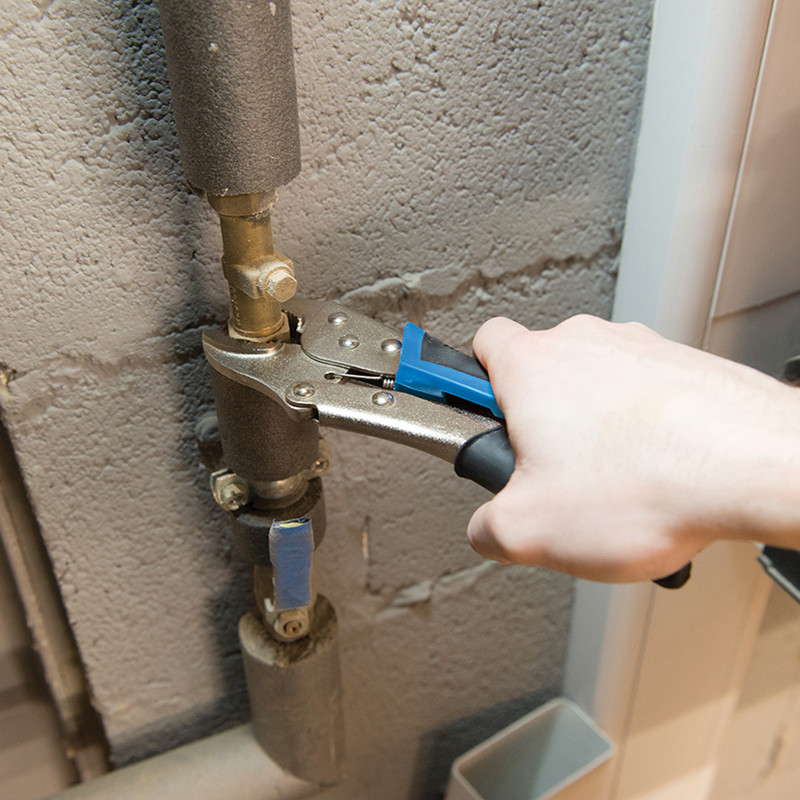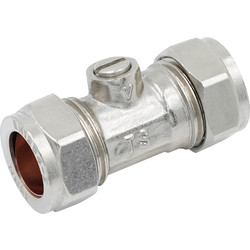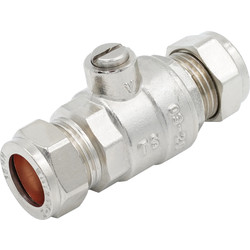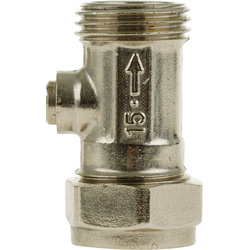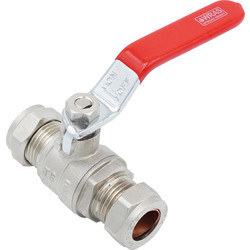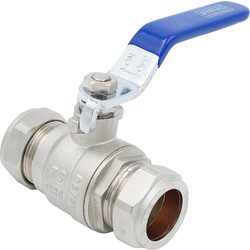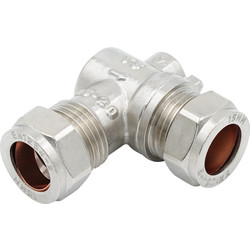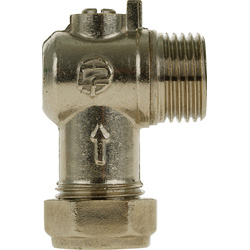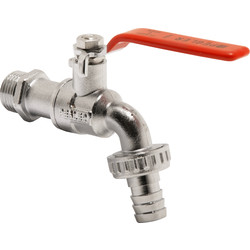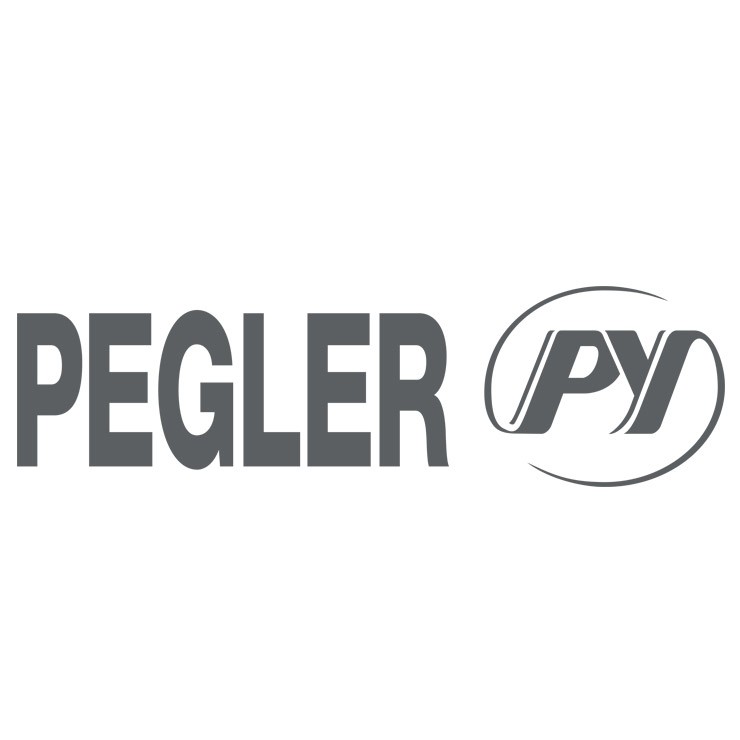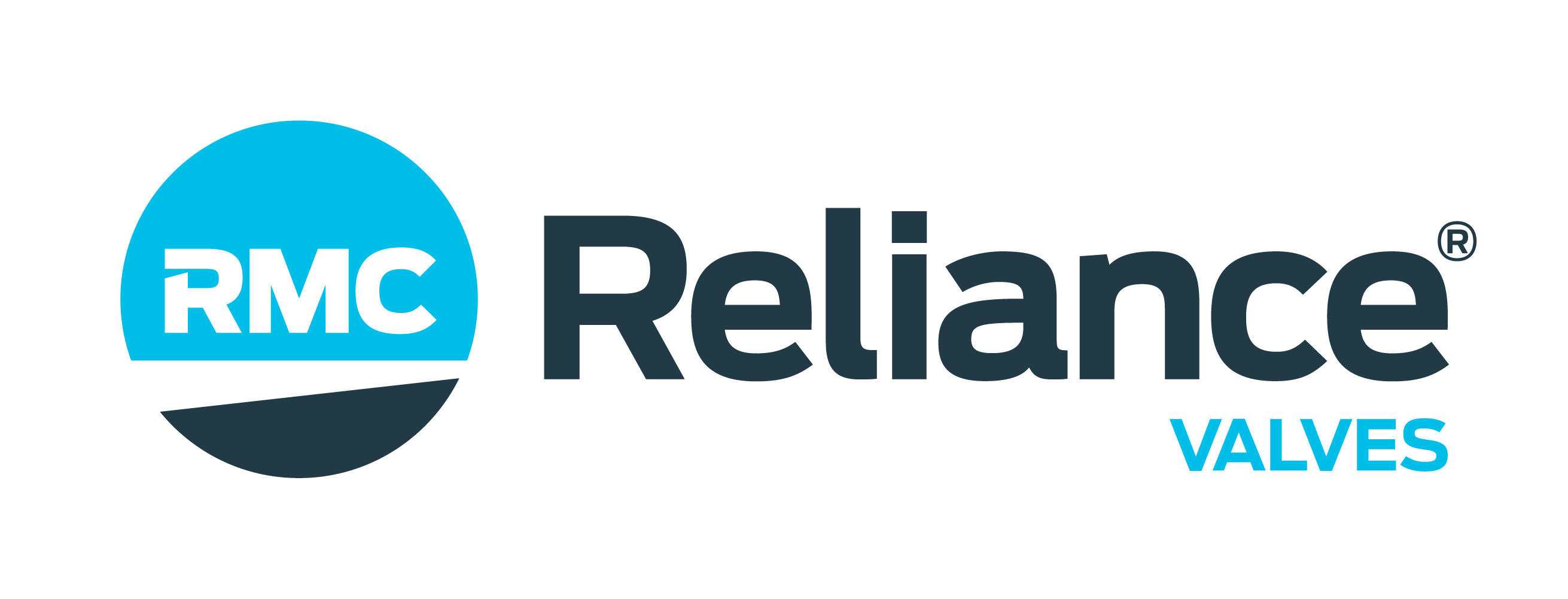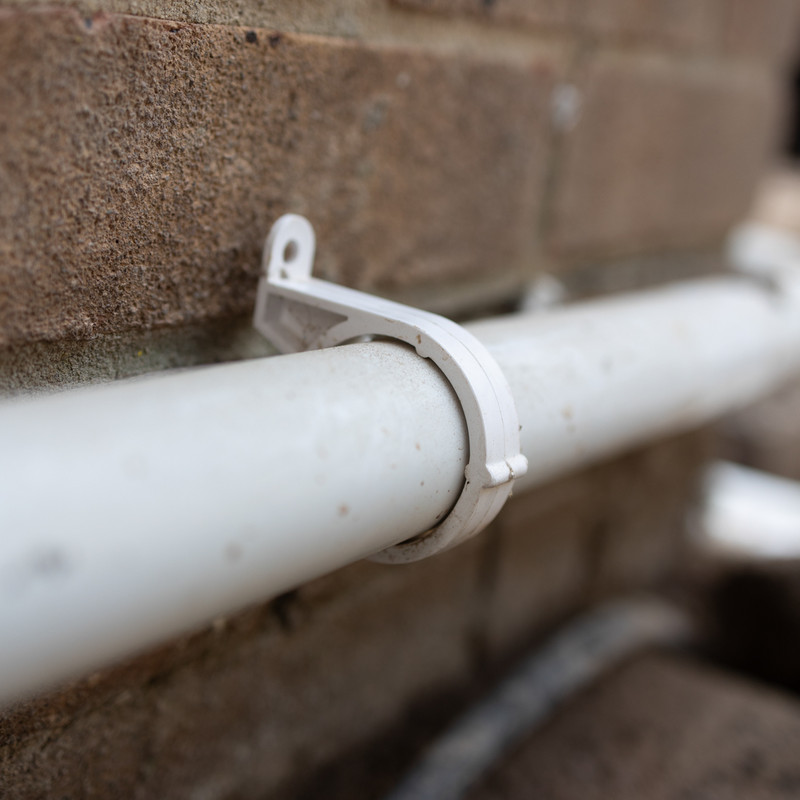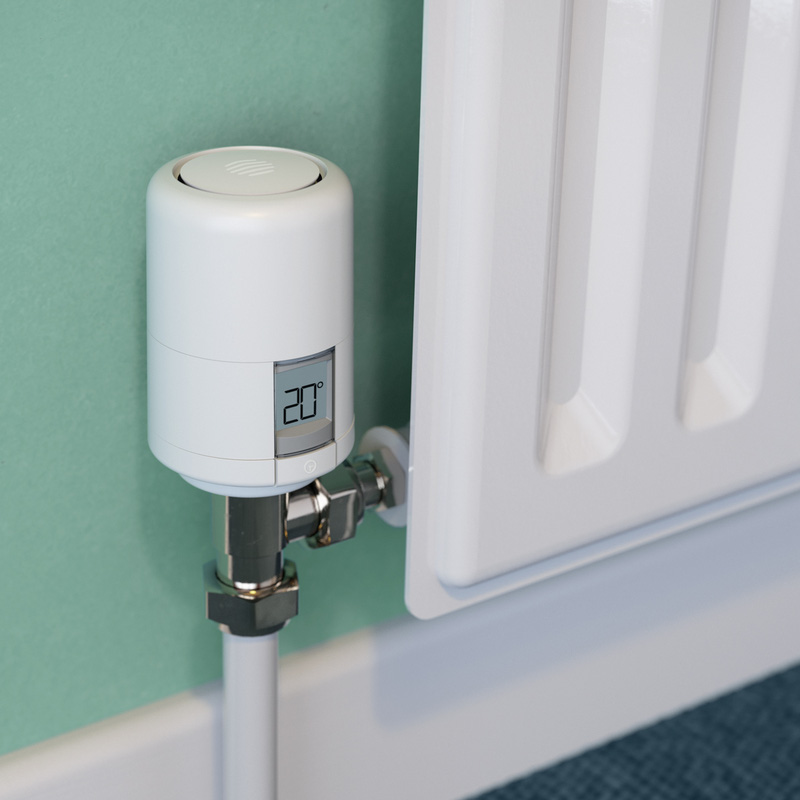With a wide number of plumbing valve types on offer, it can be daunting to know where to start. From fundamental stopcocks to intricate pressure reducing valves, every type has its use in a plumbing system.
When choosing a plumbing valve, you’ll want to consider the situation you’re installing the valve in, what it will be used for, and whether it’ll be fitted to a hot or cold supply pipe.
You may also want to consider the layout of the existing pipes, as you may need straight or angled valves to fit into the system. Also, if you’re installing in a domestic setting you’ll likely need 15mm or 22mm diameter valves, whereas in commercial settings you’ll probably need 28mm valves.
Types of Plumbing Valves
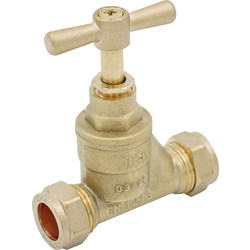
Stopcocks
Your stopcock is like a control tap for mains water to a property. An external stopcock controls the flow from the street's water main to the home, and is usually located just outside your property. An internal stopcock turns off the water using a plug or stopper as it enters the property and is typically found under the kitchen sink or in a cupboard, bathroom, or utility room. It looks like a tap, minus the spout, acting as a connector between two lengths of pipe.
Used for
-
Shutting off or opening the mains water supply in domestic properties
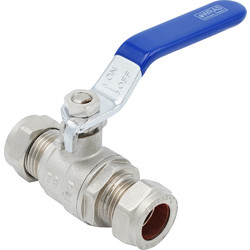
Ball Valves
A ball valve is a device that uses a hollow, perforated ball to manage water flow. When the ball's hole aligns with the flow inlet, it's open. Twisting the valve 90 degrees upwards shuts the valve, blocking the flow. The handle lays flat when open and stands upright when closed, making it easy to visually confirm whether it’s open or not. Ball valves are affordable, with various designs available for specific applications.
Used for
-
Shutting off or opening water or gas supply
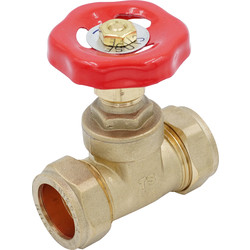
Gate Valves
Gate valves are similar to stopcocks, but are more commonly found in industrial settings. They control the flow using a gate or plate which is moved to shut off or open the valve. They are controlled using a wheelhead at the top of the valve.
Used for
-
Shutting off or opening water supply in commercial properties
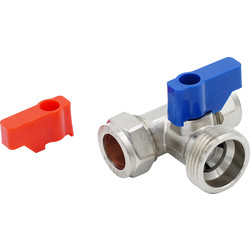
Tee Valves
Dual appliance tee valves let you connect two machines to one supply pipe, commonly used for washing machines or dishwashers. They simply act as splitters, allowing water to flow to one or both appliances, reducing the need for excessive pipework.
Used for
-
Connecting two appliances to one supply
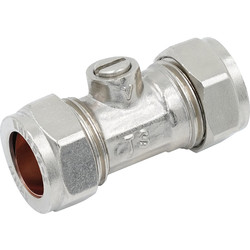
Isolating Valves
Isolating valves, also known as service valves, are used for stopping water flow to a specific appliance without shutting off the water supply to the entire property. They work in the same way as stopcocks with a lever or screw that is turned to open or shut the water supply. This is ideal for maintenance or repairs, minimising water loss and preventing disruptions to the entire system.
Used for
-
Stopping supply to one appliance or area of the plumbing system
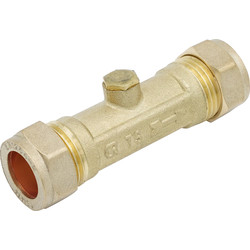
Check Valves
Check valves ensure water flows in one direction, preventing backflow. If the water flows backwards, a ball or disc moves to close the valve. They're crucial for stopping water from flowing backward in a plumbing system.
Used for
-
Prevent contaminated or waste water re-entering the pipes
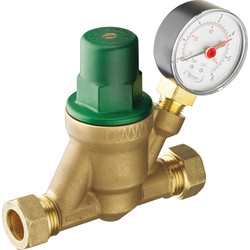
Pressure Reducing Valve
Pressure reducing valves do exactly what they say – lower and regulate water pressure in a plumbing system. These valves have a diaphragm which constricts to let less water through and reduce pressure, and opens if the pressure needs increasing. A pressure gauge on the valve displays the pressure of the water flowing out of the valve. This helps protect plumbing fixtures and appliances from damage caused by excessive water pressure.
Used for
-
Reducing water pressure in a plumbing system
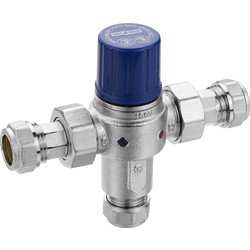
Thermostatic Mixing Valves
Thermostatic mixing valves blend hot and cold water to maintain a consistent and safe water temperature. These valves have a thermostatic element which expands or contracts depending on the water temperature and moves a piston to let more hot or cold water in to reach the desired temperature. They’re often used with showers and taps to prevent scalding and ensure a comfortable water temperature.
Used for
-
Blending hot and cold water, such as in mixer taps or showers
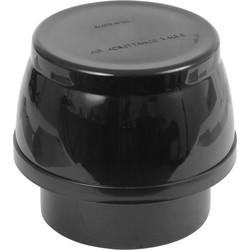
Air Admittance Valves
Air admittance valves, or AAVs, rebalance pressure in a soil pipe to normal levels. They allow air to enter a plumbing drainage system when negative pressure develops due to water flow. When the pressure is equalised, indicating no water flow, gravity closes the vent terminal, preventing sewer gases from escaping into a building. AAVs are a flexible venting solution, especially in situations where connecting to an existing venting system is challenging.
Used for
-
Rebalancing pressure in soil pipes
Key Plumbing Valve Considerations
Straight or Angled
The choice between straight and angled plumbing valves depends on your pipe layout. Straight valves work well for a direct pipe path, offering simplicity, while angled valves accommodate for changes in direction. Consider your plumbing layout and spatial constraints to determine the most suitable valve for efficient and secure connections.
Colour
The colour of plumbing valves is not a design choice – valves with red levers, handles, or markers are designated for the hot water supply, while blue valves are for the cold water supply. This visual cue helps easily identify and distinguish components associated with the hot water system, which is essential when carrying out maintenance
Diameter
The diameter of the plumbing valve will depend on the size of the pipes in the rest of the system. Domestic internal plumbing pipes are typically 22mm or 15mm, so will fit valves of the same diameter. In commercial settings where the demand is greater, internal supply pipes are 28mm.
Material
Most plumbing valves are made of brass as it doesn’t rust and is resistant to corrosion. However, you’ll find some valves are made of dezincification-resistant brass, also known as DZR brass. This is because some water in the UK and other countries is corrosive and can remove the zinc from standard brass and cause damage over time.

